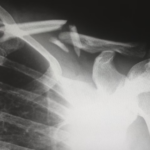If you’ve been an athlete for a number of years, you’ve probably noticed some changes in the way you feel after a long workout, training session, or competition. It might take you a bit longer to recover than it used to, and you might feel more soreness in your muscles. It’s all a part of getting older.
While staying active as you age is incredibly important, it’s just as essential to make sure you’re safeguarding your body. You might need to take a few extra steps and precautions to prevent injuries than you did when you were younger. You also might need to learn new recovery techniques to maintain your well-being and longevity in whatever sport you play.
It’s not always easy to admit you’re getting older, especially as an athlete. But, by putting precautions in place to safeguard your body, there should be no reason why you can’t continue to enjoy and excel in the sport you love for many years to come.
Establish a Routine
It’s a good rule of thumb for every athlete to establish a training routine that works for them. As you mature, however, a wellness routine becomes more important when it comes to injury prevention and listening to your body. For example, it’s expected that you’re going to be more tired or fatigued as you age. Some of that is natural, but some might have to do with your daily habits.
For example, if you’re training or working out later in the day, it could be interrupting your sleep. Working out first thing in the morning could be the change necessary to sleep better at night. Other factors that could be contributing to your fatigue include:
- Poor diet
- Iron deficiency
- Thyroid disorders
- Dehydration
- Stress and anxiety
Thankfully, many of these things can be taken care of with a few changes to your routine. Sleep should be a top priority for you, as it gives your body a chance to rest and recover so you don’t get hurt and you can perform at your highest peak.
Now, more than ever, living a healthy lifestyle is key. Prioritize sleep and healthy eating, take care of your mental health as well as physical, and don’t hesitate to practice preventative care by regularly visiting your doctor, dentist, chiropractor, and any other medical professional who can contribute to your well-being.
Understand Common Injuries
You’re likely no stranger to injuries if you’ve been exercising or playing a particular sport for a long time. It should also come as no surprise that the older you get, the greater your risk of getting injured.
While most injuries associated with aging are acute, they can throw you off of your game for a while. Some might even have long-term repercussions. Muscle strains and tears are the most common, and while you might not be able to completely eliminate the risk of injury, there are things you can do to reduce it.
Things like good agility, cardiovascular fitness, and strength training can all help with injury prevention, but being in good shape doesn’t mean you won’t ever get injured.
Take the time to properly warm up and stretch before you work out. Your tendons lose elasticity with age, so making sure they’re “loose” before exercising will help to prevent tears. Stretches will also make it easier to stay flexible as you age.
Finally, you simply might not want to do things at the same level that you did when you were younger. Age shouldn’t hold you back from reaching your fitness goals, but make sure you’re listening to your body. If you’re tired, sore, or not feeling your best, take it as a sign that it’s time to slow down or make some changes.
Take Recovery Seriously
In the unfortunate event that you do experience an injury, knowing how to recover correctly is crucial. Injuries can set any athlete back, but it can take longer to heal and recover when you’re older.
Most importantly, work with your doctor to come up with a recovery plan that will get you back on your feet as soon as possible. Practice the R.I.C.E. method after getting injured:
- Rest
- Ice
- Compression
- Elevation
This quick and effective method will help to ensure you don’t further injure yourself before you can see a doctor. As you start on a long-term recovery, make sure you’re getting plenty of rest, maintaining proper nutrition, and, again, listening to your body. You might be tempted to start training at full speed again as soon as possible. But, doing so could cause your injury to become worse and lengthen your recovery time.
If you want to stay active while you’re recovering, consider a low-impact form of exercise, like swimming, cycling, or walking. Walking is a great way for mature athletes to stay fit while improving cardiovascular health. It can also help you maintain your physical well-being as you try to recover from an injury. Living in a walkable neighborhood comes with huge benefits, including convenience, social opportunities, and community development. If you haven’t taken the time to tour your community on foot, now you have the opportunity!
Safeguarding your body should be a priority for athletes at any age. But, understanding how your body changes with age and putting precautions in place will make it easier for you to stay active and fit for years to come.
Author Profile
Latest entries
 FitnessApril 26, 2024Injury Prevention Strategies for Mature Athletes: Safeguarding Your Body as You Age
FitnessApril 26, 2024Injury Prevention Strategies for Mature Athletes: Safeguarding Your Body as You Age EducationApril 9, 2024From Passion to Profession: Pursuing a Career in Sports Management
EducationApril 9, 2024From Passion to Profession: Pursuing a Career in Sports Management FitnessMarch 23, 2024How Digital Platforms are Revolutionizing Fitness
FitnessMarch 23, 2024How Digital Platforms are Revolutionizing Fitness FitnessMarch 2, 2024Mental Health and Coping with Sports Injury: The Psychological Aspect to Getting Back in the Game
FitnessMarch 2, 2024Mental Health and Coping with Sports Injury: The Psychological Aspect to Getting Back in the Game

